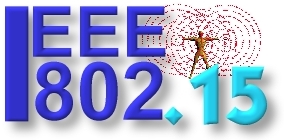
IEEE 802.15 WPAN™
Task Group 10a (TG10a)
Routing Mode Additions
|
|
| IEEE 802.18 RR TAG |
| IEEE 802.19 Coex TAG |
| IEEE 802.20 MBWA |
| IEEE 802.21 MIHS |
| IEEE 802.22 WRAN |
| IEEE 802.23 ES |
Overview
The recommended practice 802.15.10 defines a protocol that routes packets in a dynamically changing IEEE 802.15.4 network with minimal impact from route management.In particular, the recommended practice provides for automatic handling of route related capabilities such as the following: Discovery and addition of new nodes; Route establishment; Dynamic route reconfiguration; Re-establishment of broken/lost routes; Purging of inactive routes; Real time link status information exchange; Single hop appearance at the networking layer (not breaking standard Layer 3 mechanisms); Support for broadcast; Support for multicast; Frame forwarding. The result is an extension of the area of coverage as the number of nodes increases.
This amendment fully defines how the addressing and route information (already defined in the standard) are to be used by the routing modes (also currently defined in the standard), including at least the following:
E2E acknowledgement from mesh route in non-storing mode P2P routing using a combination of up/down routing in non-storing mode On-demand P2P routing for E2E acknowledgement in non-storing mode On-demand path storing when sending unicast in non-storing mode
Information
Who to contact with questions
- Chairman: Charlie Perkins
- Vice Chairman: Joerg Robert
- Technical Editor: Charlie Perkins
- Secretary: Joerg Robert
The Institute of Electrical and Electronics Engineers, Inc.